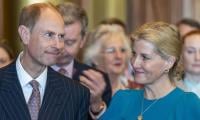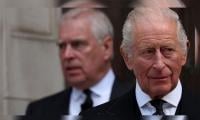China leaves rates steady after Fed as two economies diverge
SHANGHAI: China´s central bank left short-term rates unchanged on Thursday, choosing not to follow a benchmark interest rate rise by the U.S. Federal Reserve despite the risk that it could that it could put renewed pressure on the yuan.
The move by the People´s Bank of China (PBOC) means that it did not immediately adjust borrowing costs for interbank loans after the Fed raised its key rate overnight.
While the PBOC had been expected to stand pat and has not always followed the Fed in lockstep, the decision highlights diverging policy paths for the world´s largest economies.
China´s economy is slowly losing momentum and is facing more pressure from escalating U.S. trade tariffs.
The Fed, on the other hand, sees the U.S. economy growing at faster-than-expected pace this year, with only a slight slowdown in 2019.China has, in fact, been easing credit policies and trying to reduce financing costs in various ways in recent months as economic activity has softened and U.S. trade threats mount.
The PBOC also said it had skipped open market operations on Thursday as liquidity levels in the banking system were "relatively high".
It did not mention interest rates on reverse repos in a statement on the its website, but attributed "relatively high" liquidity levels to quarter-end fiscal expenditures, which could "absorb factors including maturing reverse repos and government bond issuance".
Sheng Songcheng, a policy adviser to the central bank, told state-run Beijing News that raising interest rates does not fit China´s current economic situation, as it needs to lower financing costs to support companies and promote steady growth.
"The Fed rate hike would pile some pressure on the yuan in the short term, but it would not be huge as China´s economy was largely stable," Sheng was quoted as saying.
China has currency and capital flow controls in place, and there remains a gap in interest rates between the China and United States, Sheng added.
The PBOC had followed a Fed hike in March by bumping up its short- and medium-term rates, but held its fire in June despite U.S. tightening.
The interest rate on China´s benchmark bond is about 61 basis points (bps) higher than its U.S.counterpart . In June, the gap was more than 70 bps, and any further narrowing could risk a resurgence of outflows from China.
The Fed foresees another rate hike in December, three more next year, and one increase in 2020.In contrast, analysts forecast more policy support measures are on the way in China in coming months, including at least one more reduction in banks´ reserve requirements, other forms of liquidity injections and bigger tax cuts.
"There is no regular monetary policy meeting in China, and hence it can adjust rates any time. Skipping OMO today per se does not have an implication on future rates move," said Frances Cheung, head of macro strategy for Asia at Westpac.
"That said, this time round, there is minimal pressure for the PBOC to hike OMO rates given the narrow spreads with market rates." The interest rate for seven-day reverse repurchase agreements stood at 2.55 percent in the last cash injection on Sept. 20, while market rates largely swung in a range of 2.55 to 2.7 percent in recent months. Reverse repos are one of its most commonly used tools to control liquidity in the financial system.
The PBOC has not changed benchmark one-year lending or deposit rate since October 2015.With 60 billion yuan ($8.73 billion) worth of reverse repos maturing on Thursday, the PBOC drained the same amount of funds from the money market for the day. The yuan was little changed after the Fed and PBOC decision.
Chinese authorities took several steps last month to stabilise the currency after largely standing aside and letting it fall for 10 straight weeks over the summer. But analysts expect it will come under renewed pressure in coming months if the U.S. dollar remains buoyant and as U.S. tariffs start to bite on China´s exporters, prompting Beijing to roll out more easing measures.
-
 Jennifer Aniston, Jim Curtis Face One Major Hurdle In Their Union
Jennifer Aniston, Jim Curtis Face One Major Hurdle In Their Union -
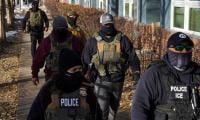 Restaurant Workers Detained After ICE Agents Dine At Minnesota Eatery
Restaurant Workers Detained After ICE Agents Dine At Minnesota Eatery -
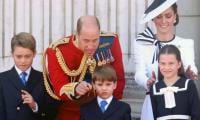 Kate Middleton Reveals Sport She Would Not Play With Prince George
Kate Middleton Reveals Sport She Would Not Play With Prince George -
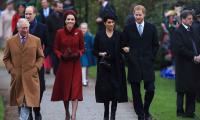 First Poll Since King Charles' Action Against Andrew Reveals Royal Family's Public Standing
First Poll Since King Charles' Action Against Andrew Reveals Royal Family's Public Standing -
 Blake Lively Strengthens Legal Team Ahead Of Justin Baldoni Trial
Blake Lively Strengthens Legal Team Ahead Of Justin Baldoni Trial -
 'Back To School!': Palace Shares Details Of Princess Anne's Latest Engagements
'Back To School!': Palace Shares Details Of Princess Anne's Latest Engagements -
 Paul Mescal Clarifies Acting Break Comment As He Teases Paul McCartney Role
Paul Mescal Clarifies Acting Break Comment As He Teases Paul McCartney Role -
 Kate Middleton's Unexpected Style Of Arrival At Solo Outing Goes Viral
Kate Middleton's Unexpected Style Of Arrival At Solo Outing Goes Viral -
 Why ‘X’ Is Down? Thousands Report Twitter Outage: Here’s What You Can Do
Why ‘X’ Is Down? Thousands Report Twitter Outage: Here’s What You Can Do -
 Florida Man Held After Alleged Nail-scattering On Busy Intersections
Florida Man Held After Alleged Nail-scattering On Busy Intersections -
 Valeria Nicov: Sean Penn's Athletic Girlfriend Raises Eyebrows With Latest Photos
Valeria Nicov: Sean Penn's Athletic Girlfriend Raises Eyebrows With Latest Photos -
 Sharon Stone Lashes Out At Fellow Award Show Attendees After Stealing Accusations
Sharon Stone Lashes Out At Fellow Award Show Attendees After Stealing Accusations -
 Gwyneth Paltrow Reveals Real Reason She Said Yes To 'Marty Supreme'
Gwyneth Paltrow Reveals Real Reason She Said Yes To 'Marty Supreme' -
 King Charles Says He And Queen Camilla Stand With People Of Ukraine
King Charles Says He And Queen Camilla Stand With People Of Ukraine -
 Ben Affleck Argues In Favour Of His Shirtless Scene In 'The Rip'
Ben Affleck Argues In Favour Of His Shirtless Scene In 'The Rip' -
 Mississippi Postal Worker Arrested After Complaints Of Marijuana Odour In Letters
Mississippi Postal Worker Arrested After Complaints Of Marijuana Odour In Letters
